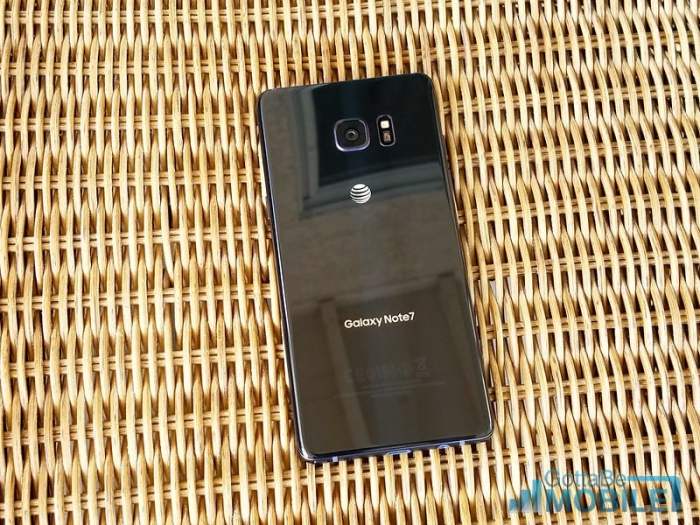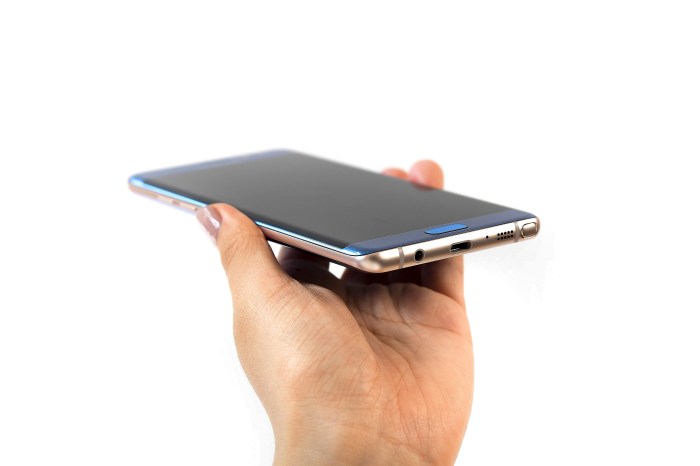The Note 7 Recall and Replacement Program
The Samsung Galaxy Note 7, a highly anticipated smartphone, faced a major setback in 2016 due to widespread battery issues that led to overheating and even fires. This ultimately resulted in a global recall, a significant challenge for Samsung and a lesson in product safety for the tech industry.
The Note 7 Battery Issues
The Note 7’s battery problems stemmed from a design flaw in the lithium-ion batteries manufactured by Samsung SDI and another supplier. These batteries were prone to overheating and catching fire, posing a serious safety risk to users. Samsung initially attributed the issue to a manufacturing error but later discovered a more fundamental problem in the battery design itself.
The Replacement Program
Samsung swiftly initiated a global recall of the Note 7, aiming to replace affected devices with safer units. The company implemented a multi-phase program to address the issue, including:
- Phase 1: Samsung announced the recall in early September 2016, offering replacements for the original Note 7 devices. The company initially attributed the issue to a manufacturing error and claimed to have identified the problem.
- Phase 2: Despite the initial replacement program, reports of overheating and fires continued. Samsung then announced a second recall in October 2016, halting production of the Note 7 altogether. This time, the company acknowledged a more fundamental issue with the battery design itself.
- Discontinuation: Samsung ultimately discontinued the Note 7, effectively ending the replacement program. The company offered refunds and exchanges for other Samsung devices to affected customers.
Challenges Faced by Samsung
Samsung faced significant challenges in managing the Note 7 recall and replacement program. These challenges included:
- Public Perception: The Note 7 recall damaged Samsung’s reputation, raising concerns about product safety and quality control.
- Financial Losses: The recall resulted in substantial financial losses for Samsung, including the cost of replacing devices, refunding customers, and halting production.
- Logistical Complexity: Managing a global recall across multiple markets and distribution channels presented logistical challenges, including coordinating with retailers, carriers, and customers.
- Communication Issues: Samsung faced criticism for its communication strategy, particularly the initial delay in acknowledging the extent of the battery issue and the conflicting messages regarding the replacement program.
Problems with Replacement Note 7 Handsets
Samsung’s Note 7 recall was a massive undertaking, aiming to replace faulty devices with supposedly safe ones. However, even the replacement handsets faced issues, further tarnishing Samsung’s reputation and shaking user trust.
Issues with Replacement Note 7 Handsets, Replacement note 7 handset problems
Despite the recall, reports emerged of replacement Note 7 handsets experiencing similar overheating and battery issues. While the initial recall focused on faulty batteries, the replacement handsets seemed to exhibit different, but still concerning, problems.
- Overheating and Battery Explosions: While the initial recall addressed battery defects, some replacement Note 7 handsets still experienced overheating and battery explosions. These incidents, though less frequent than with the original batch, raised questions about Samsung’s quality control and testing processes.
- Software Glitches: The replacement Note 7 handsets also encountered software glitches, causing unexpected shutdowns, freezing, and other performance issues. These software problems further aggravated user frustration, as they added to the overall unreliability of the device.
- Charging Issues: Some users reported problems with charging their replacement Note 7 handsets, including slow charging speeds and devices failing to charge altogether. These issues could be attributed to both hardware and software malfunctions, further contributing to the device’s unreliability.
Comparison of Issues in Original and Replacement Note 7 Handsets
The issues found in the replacement Note 7 handsets differed from those in the original batch. While the original Note 7s primarily suffered from battery defects leading to overheating and explosions, the replacements faced a broader range of problems, including software glitches and charging issues. This indicated that the recall may not have addressed all underlying design flaws in the Note 7.
Impact on User Trust and Samsung’s Reputation
The issues with the replacement Note 7 handsets severely impacted user trust in Samsung. The company’s reputation took a significant hit, with consumers questioning its commitment to quality and safety. The recall and subsequent problems with the replacement devices created a perception of Samsung as a company unable to effectively address product flaws. This loss of trust could potentially affect future sales of Samsung products and damage its long-term brand image.
Samsung’s Response to the Problems
The Note 7 fiasco was a major blow to Samsung’s reputation. The company faced intense scrutiny and criticism for its handling of the situation, especially after the second recall. However, Samsung’s response to the problems with the replacement Note 7 handsets was a critical aspect of its efforts to regain consumer trust.
Samsung’s Communication and Actions
Samsung’s communication and actions in addressing the issue were crucial in shaping public perception. The company faced significant challenges in managing the situation, as the second recall came just a few months after the initial recall. Despite these challenges, Samsung attempted to demonstrate transparency and accountability.
- Immediate Recall and Apology: Samsung immediately issued a second recall for all Note 7 devices, regardless of whether they were original or replacement units. The company also issued a public apology to customers, acknowledging the seriousness of the situation and expressing regret for the inconvenience caused.
- Enhanced Communication: Samsung communicated the recall to customers through multiple channels, including email, text messages, and social media. The company also set up dedicated websites and call centers to provide information and support to customers.
- Financial Compensation: Samsung offered financial compensation to customers who had purchased a Note 7 device, including refunds, replacement devices, and discounts on other Samsung products.
- Investigation and Analysis: Samsung launched a thorough investigation to determine the root cause of the battery overheating issues. The company also worked with external experts to conduct independent testing and analysis.
Efforts to Regain Consumer Trust
Samsung implemented various strategies to regain consumer trust after the second recall. These efforts focused on addressing the root cause of the problems, improving product safety, and strengthening customer communication.
- New Battery Safety Standards: Samsung established new battery safety standards and implemented rigorous testing procedures for all its future devices. The company also partnered with battery manufacturers to improve battery safety and reliability.
- Enhanced Quality Control: Samsung strengthened its quality control processes, including additional testing and inspection procedures, to ensure the safety and reliability of its products.
- Focus on Transparency: Samsung committed to greater transparency in its communication with customers. The company provided regular updates on its investigation and the progress made in addressing the issues.
- Customer Support: Samsung expanded its customer support resources to provide assistance to customers who had been affected by the Note 7 recall. The company also offered extended warranties and other benefits to customers.
The Long-Term Impact of the Note 7 Crisis: Replacement Note 7 Handset Problems
The Note 7 crisis, a tumultuous period in Samsung’s history, had a profound and long-lasting impact on the company’s brand image, market share, and business practices. The recall, which involved millions of devices and cost Samsung billions of dollars, served as a stark reminder of the potential consequences of product defects and the importance of stringent quality control measures.
The Note 7 crisis significantly tarnished Samsung’s brand image, which was previously known for its high-quality products and innovative technology. The widespread negative publicity surrounding the exploding devices led to a decline in consumer trust and confidence in the brand. This eroded Samsung’s market share in the smartphone market, particularly in the high-end segment where the Note 7 competed.
“The Note 7 crisis had a significant impact on Samsung’s brand image and market share, especially in the high-end smartphone market. The company’s reputation for quality and reliability took a hit, and it took time to regain consumer trust.” – Industry Analyst
Comparison to Other Major Product Recalls
The Note 7 crisis was one of the most significant product recalls in recent history, both in terms of its financial and reputational impact. It dwarfed the impact of other notable recalls, such as the Toyota unintended acceleration recall of 2009-2010, which cost the company billions of dollars but did not have the same widespread negative impact on its brand image.
- Toyota Recall (2009-2010): While the recall involved millions of vehicles and cost Toyota billions of dollars, the company was able to recover relatively quickly, with minimal long-term damage to its brand image.
- Takata Airbag Recall (2014-2019): This massive recall, involving tens of millions of vehicles, had a significant impact on the automotive industry, but it was spread out over several years, making the immediate impact on Takata’s brand image less severe than the Note 7 crisis.
Changes in Samsung’s Product Development and Quality Control
The Note 7 crisis prompted Samsung to make significant changes to its product development and quality control processes. The company implemented stricter testing procedures and increased scrutiny of its battery suppliers. It also established a new product safety team and invested heavily in research and development to prevent similar incidents from occurring in the future.
“The Note 7 crisis was a wake-up call for Samsung. It forced the company to re-evaluate its product development and quality control processes. The changes they implemented were significant and aimed at preventing a similar crisis from happening again.” – Samsung Executive
Replacement note 7 handset problems – The Note 7 crisis serves as a stark reminder of the importance of rigorous quality control and effective crisis management in the tech industry. Samsung’s response to the situation, while ultimately successful in regaining consumer trust, came at a significant cost. The company learned a valuable lesson about the importance of prioritizing user safety and transparency in the face of a crisis. The Note 7 debacle, though a painful experience, ultimately led to a renewed focus on product safety and quality at Samsung, shaping the company’s approach to product development and crisis management for years to come.
Remember the Note 7 fiasco? Exploding phones and replacement handsets that also had issues? Well, it seems like Samsung isn’t the only one facing tech headaches. Twitter just launched live streaming apps for Apple TV, Fire TV, and Xbox One twitter launches live streaming apps for apple tv fire tv and xbox one which means you can now watch your favorite tweets on the big screen.
Hopefully, these apps won’t be as prone to unexpected glitches as those replacement Note 7s.
 Standi Techno News
Standi Techno News

